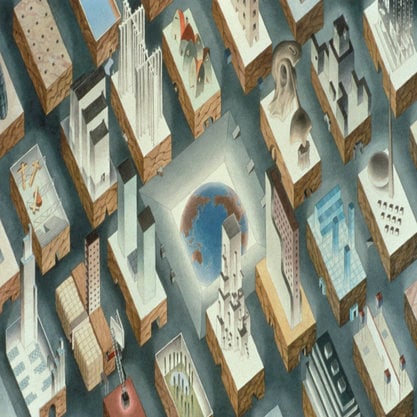Article
Assemblage By Pantazis, Steven
Article
Assemblage is an artistic form that involves the transformation of non-art objects into two-dimensional or three-dimensional artistic compositions. Together with abstraction, it has been considered one of the two most significant innovations of modern art. The term assemblage was first used in 1953 by critic, philosopher and poet Max Loreau in describing French artist Jean Dubuffet’s series of imprint collages of butterflies’ wings. The term was popularized by the Museum of Modern Art’s 1961 exhibition The Art of Assemblage, which showcased the work of early 20th-century European artists, such as Marcel Duchamp, Pablo Picasso, George Braque and Kurt Schwitters, and Americans such as Joseph Cornell, Man Ray and Robert Rauschenberg.

